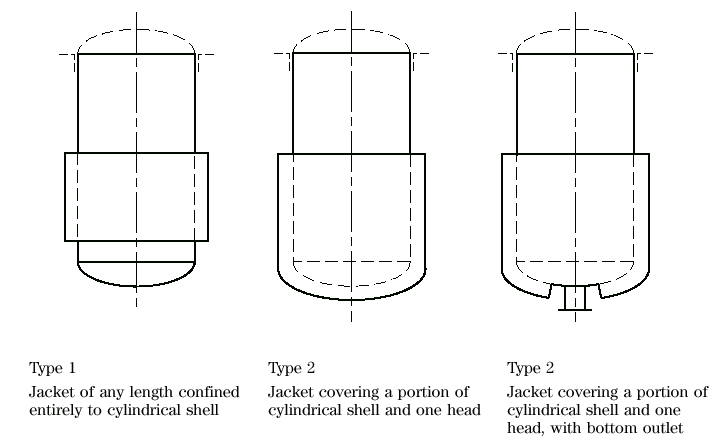| Jacketed
Vessels
A jacket is a second pressure container applied to the
outside of a pressure vessel shell, to either apply cooling or heating
to the vessel contents.
Big differences between jacket and shell temperatures can create huge thermal stresses, which can lead to thermal fatigue. The internal pressure in the jacket will normally act as an external pressure on the inner shell; this can be further compounded if the inner shell pressure can drop to full vacuum. The inner shell design should be capable of withstanding at least 80% of the jacket test pressure at ambient temperature; otherwise there is a risk that the inner shell will buckle when the jacket is tested. Openings and penetration into jackets should be treated as nozzles, and normal compensation rules applied. Square openings should be avoided and large openings should be given special consideration. Jacket Permutations
Click Links For Further Details:-
Page Last Modified 10 March 2002
|
